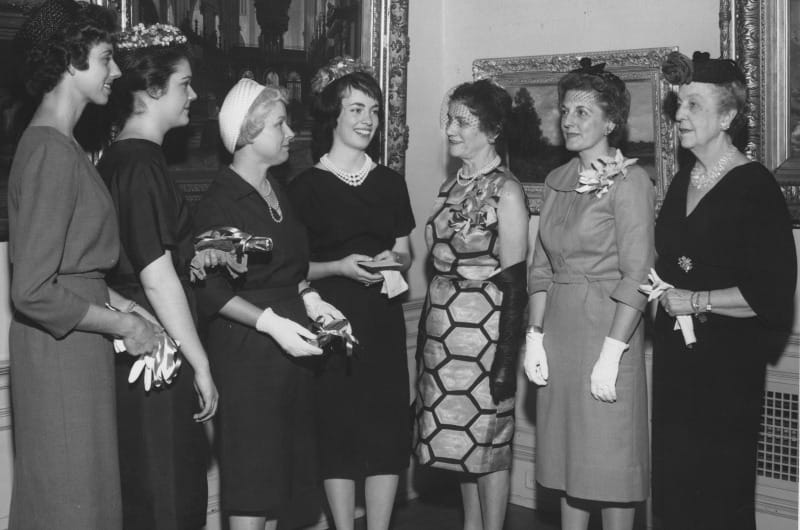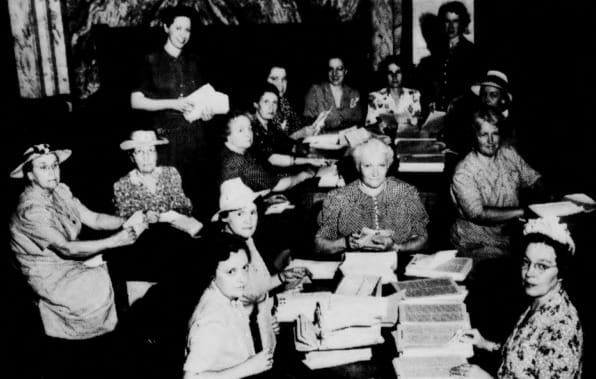The Club That Fostered a Sense of 'Belonging' for Women at Drexel

This article is part of the DrexelNow “Faces of Drexel” series honoring Drexel’s history as part of the Universitywide celebration of the 125th anniversary of Drexel’s founding in 1891.
During the Drexel Institute of Art, Science and Industry’s first 35 years, there was no formal club to welcome new faculty, staff or their spouses. If you or your spouse had been an employee, you would have had little opportunity to meet other employees outside of mostly small and departmental social events.
But if you had joined Drexel sometime between 1927 and 1985, you might have received a welcome letter, the opportunity for you or your spouse to join other women connected with Drexel and an invitation to future plays, dinners, picnics or other events planned for that calendar year.
This was done not through individual departments or the administration, but through the Drexel Women’s Club, an independent social organization comprised of female faculty and staff members as well as wives of faculty or staff members.
The Drexel Women’s Club was founded in 1927 to “promote the good fellowship and to further the interests of the Institute in any way possible,” according to its original constitution. During the organization’s 57 years of existence, the Drexel Women’s Club did exactly that and then some.
“Perhaps one of its greatest benefits to the members is what it has done through the years in the way of bringing a sense of fellowship and ‘belonging’ to the women connected with Drexel,” wrote Alice Brothers, president of the club and wife of then-Dean of the College of Engineering LeRoy A. Brothers, in a 1960 internal newsletter.
When the Drexel Women’s Club was founded, similar women’s groups were common at more established universities like Harvard or Yale. Drexel’s organization was started after the wife of James E. Shrader, future head of Drexel’s Physics Department, wondered why Drexel didn’t have one when her husband arrived on campus during the 1925-26 school year. Shortly afterward, the club was founded largely through the efforts of Belle Matheson, wife of then-president Kenneth G. Matheson and the group’s first president. The wives of Drexel presidents Robert C. Disque, James Creese and Harold M. Myers also presided over the club through the years, as did faculty and staff members like Dean of the School of Home Economics Grace Godfrey.

Since the beginning, the Drexel Women’s Club held social events like picnics, luncheons, dinners, teas, plays, fashion shows, lectures, food sales, bridge nights, card parties and even bazaars that were attended by students and faculty alike. These events raised money for loans, scholarships and awards given to deserving female students.
In 1931, the club began giving out awards because members “had felt for some time that the Institute Day Awards for men far outnumbered those for women,” according to a history of the club written in 1947. Scholarships were named for founding president Belle Matheson, former president Margaret Morton Creese (wife of President Creese) and J. Peterson Ryder, Drexel’s first dean of men who had passed along Shrader’s suggestion for a Drexel women’s club and helped get it started.
The club’s most profitable fundraising effort was the publication of "The Drexel Women's Club Cook Book," which featured tried-and-true recipes offered by club members. The first cookbook published in 1945 featured wartime recipes ranging from then-popular recipes like Jell-O salad to classic recipes for chocolate chiffon pie. That delicious pie recipe was offered by Eleanor Matheson, wife of then-instructor Kenneth G. Matheson, Jr. (later Dean of Faculty) and daughter-in-law of President Matheson and Drexel Women's Club founder Belle Matheson. Ally Zeitz, ’15, director of the Drexel Food Lab in the Center for Hospitality and Sport Management, recreated the recipe specially for DrexelNow, as pictured.
Over 3,000 copies were printed in 1945, and the book was sold at club events and even at the Drexel bookstore afterward. It was reprinted in the ‘50s and an updated version was published in 1972.

Cookbook sales financed the final years of the group’s Drexel Newsletter, sent monthly to students, alums, faculty and staff serving their country in World War II. Originally started as a 3-page mimeographed letter mailed to 341 patrons, the newsletter grew to a 10-page newsletter mailed to over 3,000 recipients at the height of the war. Over 50 newsletters were sent from 1942 to 1946 in order to inform Drexel men and women about recent news on campus.
The newsletters stopped a few years after the end of the war, but the club continued to hold successful and popular fundraising events. Members and other Drexel community members frequently enjoyed annual dinners and picnics at the Drexel Lodge, Drexel’s country getaway in Newtown Square, Pennsylvania.
By the late 1970s, the club was struggling with a decrease in members and event attendees. Eventually, the dwindling lack of interest closed down the club for good in 1985 after a successful 57 years on campus.
It should be noted: the Drexel Women’s Club far outlasted the Drexel Men’s Club, which was founded in 1934 and ended long before its female counterpart.
In This Article
Drexel News is produced by
University Marketing and Communications.

